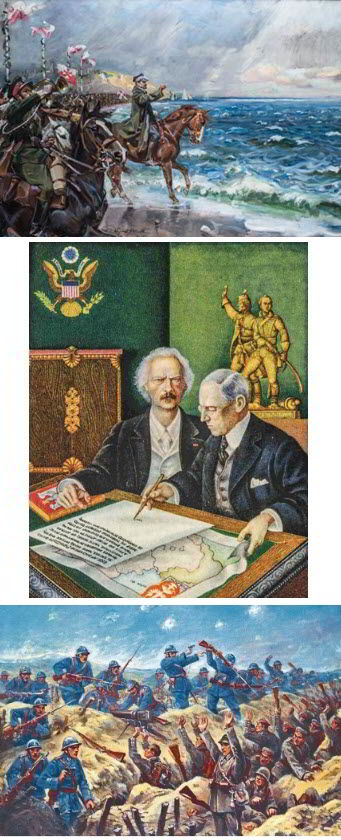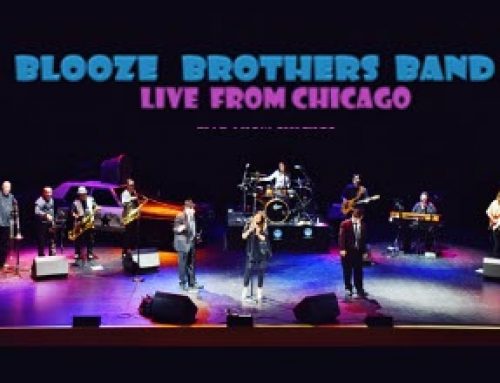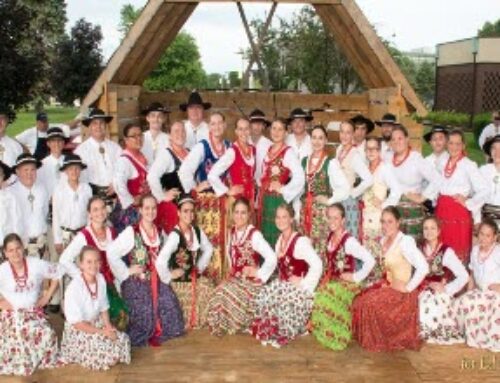Poland’s Independence – Celebrating 100 years
Art Exhibit – The Blue Army → MEZZANINE (Balcony)
Błękitna Armia w Walkach o Niepodległośc Polski
At the urgent request of Polish patriots arriving in the West of Europe during the First World War and gathered in the Polish National Committee headed by Roman Dmowski, on June 4, 1917, French President Raymond Poincare signed a decree on the creation of the Polish Army in France – called the Blue Army because of the color of their military uniforms. Poles serving in the French army, Polish prisoners of war from the Austrian and German armies, as well as our emigrants from almost all European countries began to join its ranks in masses. In the fall of 1917, the army numbered over 17,000 soldiers, and General Józef Haller took command of it.

With the entry of the U.S. into war on April 6, 1917, President Woodrow Wilson issued a proclamation of post-war order in the world, which in the 13th point proclaimed that an independent Polish state should be established within its former borders and with access to the sea. It was the result of efforts of Ignacy Jan Paderewski, who immediately called on the compatriots in America to support the Blue Army as well. About 25,000 volunteers from the USA and Canada joined the army in response to his appeal, and so did 3,000 from Brazil, 1,000 from Argentina and 100 from Uruguay. They were armed and trained at the US expense and systematically transferred to France. From June 1918 to the end of the war on November 11, 1918, the Blue Army – consisting of two corps and four divisions, numbering over 65,000 soldiers, equipped with, among others, 98 aircraft, 120 modern tanks and more than 450 heavy guns of various caliber – took part in numerous battles with Germany, contributing to ending the war. Such a great armed force was recognized by the Entente’s countries as an allied army, which was of great importance during the post-war peace negotiations and recognition of Poland as an independent country.
After the end of the war it was decided the Blue Army would continue to expand to 70,000 soldiers and be transferred to Poland, to strengthen the forces against the Bolshevik Russia resistance to Poland regaining its former borders and consolidating its independence after 123 years of captivity. Starting in April 1919, units of the army began to arrive in Poland, and they became the best trained and armed part of the newly formed Polish army. The new Polish government immediately decided to use them in the offensive on the Ukrainian front in Eastern Galicia and in Volhynia, as well as in the operation to take Pomerania over by Poland.
These actions were empowered by the signing of the Treaty of Versailles on June 28, 1919 by Ignacy Jan Paderewski and Roman Dmowski, which restored Poland’s independence within the boundaries set by the U.S. President W. Wilson in his proclamation.
Units of the Blue Army were also the core of the Polish armed forces commanded by Marshal Józef Piłsudski, which stopped the Bolshevik invasion of Europe in 1920. The rout of the communist army near Warsaw, called the “Miracle on the Vistula River” would have been outright impossible without the participation of an émigré Polish army that had come from the West.
Declaration of Appreciation

We encourage you to join this appreciation campaign and sign the declaration by October 1, 2018.
The Copernicus Foundation joins many partners to say “Thank You, America!” This is the one-hundredth anniversary of Poland’s regained independence. The United States helped in this effort and has also supported Poland’s accession to NATO and the presence of American soldiers in Poland today.
Signatures are being collected at THIS LINK as well as on specially printed sheets available at the branches of the Polish & Slavic Federal Credit Union, and at events held by Polish-American organizations. A signature sheet will also be available at the bar during Polish Events at the Copernicus Center. Read more HERE.



